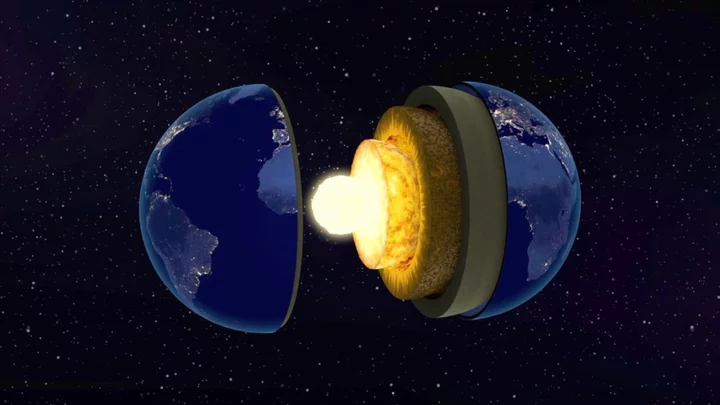
The Earth’s axis is shifting because of water
We’re discovering new things about the Earth all the time – just like scientists recently found water is slowly leaking down there from the surface, and people only just realising that there’s a massive ocean hidden under the Earth’s crust. Now, experts have found that the Earth’s axis appears to be shifting for a reason no-one saw coming. Essentially, the Earth’s tilt is changing over time. A few years ago, scientists put this down to global warming and the melting of the polar ice caps. However, experts have published new research which suggests that groundwater extraction is also playing a bigger factor than previously thought. The Earth’s poles can move with the melting of ice sheets. However, the depletion of groundwater caused by irrigation can also force the same thing to happen. While things are moving at a slow rate, with the North Pole moving gradually in the direction of the UK, the phenomenon does have the capacity to change the Earth’s seasons over time in theory. The most concerning thing, though, is what the new study published in Geophysical Research Letters suggests about the way we’re consuming Earth’s natural resources – especially when it comes to salty water being used on dehydrated land. Ki-Weon Seo of National University is co-lead on the study. She said in a statement: "Earth's rotational pole actually changes a lot. Our study shows that among climate-related causes, the redistribution of groundwater actually has the largest impact on the drift of the rotational pole." It comes after scientists recently discovered water is slowly leaking down there from the surface. The liquid is dripping down descending tectonic plates, before eventually reaching the core after a 2,900 kilometre journey. And while the process is slow, it has over billions of years formed a new surface between the molten metal of the outer core and the outer mantle of the Earth. Sign up for our free Indy100 weekly newsletter How to join the indy100's free WhatsApp channel Have your say in our news democracy. Click the upvote icon at the top of the page to help raise this article through the indy100 rankings
2023-11-22 23:49

Great white sharks keep entering the twilight zone and experts are mystified
Great white sharks are displaying unprecedented behaviours, and experts can’t explain why. One of the ocean’s greatest apex predators has been entering the twilight zone way beneath the surface of the ocean, and far beneath the areas they normally feed in. The twilight zone, also referred to as the mesopelagic zone, is the area 200 to 1,000 metres down below the surface which is at least partly permeated by sunlight. The midnight zone, meanwhile, is found 1,000 to 3,000 metres down and is impenetrable to sunlight. Now, a new study published in the journal PNAS offered insight into the behaviours of 344 tagged predatory fish including great white sharks. Scientists would usually expect the creatures studied to dive to the deep scattering layer (DSL), which is full of small fish and other ocean life forms and therefore attracts more predators than other levels. However, there was also evidence that suggested predators dove down far deeper than the DSL, and scientists don’t know why. According to the research, great white sharks dive down to as deep as 1,128 metres. Camrin Braun is assistant scientist at the Woods Hole Oceanographic Institution and study lead. Braun told Live Science: "How, when, where they access the deep ocean certainly varies, but the clear anecdotal answer is that the deep ocean seems like an important habitat regardless of the predator species. It's clear there are good reasons for these animals to dive deep, otherwise why would they all do it? "There's good evidence for some species/situations in which diving deep is clearly for foraging," Braun added. "So that supported our expectation. However, we also find several cases where we can pretty definitively say the use of the deep ocean is not for feeding – or if it is it represents a totally different kind of predator-prey interaction or mysterious prey resource." The study could suggest that the twilight zone could be far more important to great white sharks and other predatory fish than previously thought. "If it turns out that there is indeed more biomass in the twilight zone than in all current marine capture fisheries combined then it's possible to imagine a kind of mesopelagic 'gold rush' to catch and use this biomass," Braun said. "There are many 'ifs' in this chain and many issues in making mesopelagic fishing feasible but it seems that biomass may be important for predators. Therefore, we really need to better quantify those links between predators and mesopelagic biomass before we can sustainably harvest/use those resources.” Sign up for our free Indy100 weekly newsletter How to join the indy100's free WhatsApp channel Have your say in our news democracy. Click the upvote icon at the top of the page to help raise this article through the indy100 rankings
2023-11-22 23:26

What is biohacking – the latest wellness trend taking over TikTok?
Biohacking is the latest wellness trend taking the internet by storm, with TikTok witnessing a staggering 316 per cent increase in searches. More notably, Bryan Johnson, the founder of KernelCo and Blueprint, has contributed to the intrigue after investing approximately $2 million per year to reduce his biological age. The 46-year-old tech tycoon recently made headlines for tracking his nighttime erections, in an attempt to reach the level of an 18-year-old. How exactly does he do that, you may ask? Well... He gives himself electric shocks in his private area. Johnson told Steven Bartlett on The Diary of a CEO podcast that nighttime erections "are actually a meaningful health indicator" because they "represent psychological health, cardiological health." While that's one extreme measure of biohacking, there are other methods behind the trend. A spokesperson for Snusboss said: "Biohacking refers to the practice of making changes to one’s biology, typically through self-experimentation and the use of technology, to enhance physical and cognitive abilities, optimize health, and achieve personal goals." “Currently #biohacking has 791 million views on TikTok, and continues to gain popularity, particularly with Millennials and Generation Z who are becoming more interested in the scientific research behind their health and wellbeing and are also open to experimenting with new techniques," he continued. Biohacking is essentially an unconventional experimental biotechnology that is believed to help improve overwell wellbeing. Here are several ways people are implementing into their lives: Ice cold plunge "Cold plunging is an aspect of cold-water therapy or cold-water immersion, which involves immersing oneself in cold water temperatures. "It is recommended to complete 11 minutes of cold-water exposure per week, which can be broken into three minutes per session. "Studies suggest 50 to 59 degrees Fahrenheit (10 to 15 degrees Celsius) to be an optimal temperature range for cold plunges focused on reducing muscle soreness. "Doing this will also help to reduce inflammation, improve circulation, and enhance recovery after exercise. It is also shown to boost the immune system, improve sleep quality and help with stress management." Optimise your sleep "If you are getting around seven to nine hours of sleep a night, you will encourage muscle growth and repair, help keep your brain alert, improve your blood sugar levels and even enhance your lifespan. "Whilst there are several tips on social media such as eating certain fruits before bed, avoiding electronic devices and avoiding alcohol, one of the most important rules of optimizing sleep is maintaining a good circadian rhythm. "This means going to bed and waking up at the same time every day, even on weekends. To do so, try maintaining a routine and try to spend time outdoors during daylight, especially in the morning. This is because natural light exposure helps regulate your body's internal clock and promotes alertness during the day. "To measure progress, you can use devices such as smartwatches that track sleep duration and quality." Regular saunas "Saunas, small rooms heated with hot air or steam, are said to have cardiovascular health benefits. "When exposed to high temperatures, the body then works to cool itself down by increasing heart rate, blood flow, and cardiac output. This is known to decrease blood pressure, leading to benefits for cardiovascular health and longevity. "For best results from this biohack, choose a temperature between 175-195F (80-90C) with 10-20 per cent humidity for 30 minutes at least three times a week." Himalayan salt in water "Electrolyte levels are important for the body to function properly. They help to balance the amount of water in your body, balance your acid/base (pH) levels and move nutrients into your cells. "Your body makes electrolytes naturally, as well as obtaining them from food, drinks and supplements. "However, if your levels drop, mineral-rich Himalayan salt contains lots of electrolytes and is proven to help detox the body, supporting kidney and liver functions. "Therefore, around one teaspoon of Himalayan salt added to one litre of water is recommended per day. "Not only will it keep you feeling energised, but also help to boost your metabolism." Moderate coffee intake "Low to moderate doses of caffeine (50–300 mg) are scientifically proven to cause increased alertness, energy, and ability to concentrate. "Science also suggests drinking two cups of coffee a day could help ward off heart failure when a weakened heart has difficulty pumping enough blood to the body. "Both regular and decaf coffee have a protective effect on the liver. Research shows that coffee drinkers are more likely to have liver enzyme levels within a healthy range than people who don’t drink coffee. "Experts say it is healthy to drink a maximum of 2.5 cups of coffee per day." Breathwork "We breathe every single day, but we often don’t even think about how we are breathing. "In times of stress, our breath automatically responds by shortening and speeding up and this can cause further strain on the body. "With breathwork practice, the body can be trained to automatically control breathing and utilize it as a calming tool during times of stress. "Breathing also directly affects how much oxygen our cells are getting, so when we deepen and slow down the breath from its usual pattern, we allow more oxygen to enter each cell. "To practice breathwork, inhale for 4 seconds and exhale for 6 seconds. Repeat this for around 10 minutes per session. For best results, do this once in the morning and once in the evening." Red Light Therapy (RLT) "Red light therapy (RLT) is a popular method used to optimize overall skin health. RLT also helps to boost muscle recovery, reduce pain and inflammation, support nervous system health, and generally increase energy levels. "For those who experience inflammation and pain with Achilles tendinitis, and have signs of skin ageing and skin damage, research shows RLT may smooth your skin and help with wrinkles. RLT is also known to help with acne scars, burns, and signs of UV sun damage. "To complete the treatment, lie in a full-body LED red light bed or pod or be treated by a professional with a device that's outfitted with panels of red lights. "Professionals recommend trying red light therapy three times per week for 10 minutes each time for a minimum of one month." How to join the indy100's free WhatsApp channel Sign up for our free Indy100 weekly newsletter Have your say in our news democracy. Click the upvote icon at the top of the page to help raise this article through the indy100 rankings.
2023-11-22 20:19
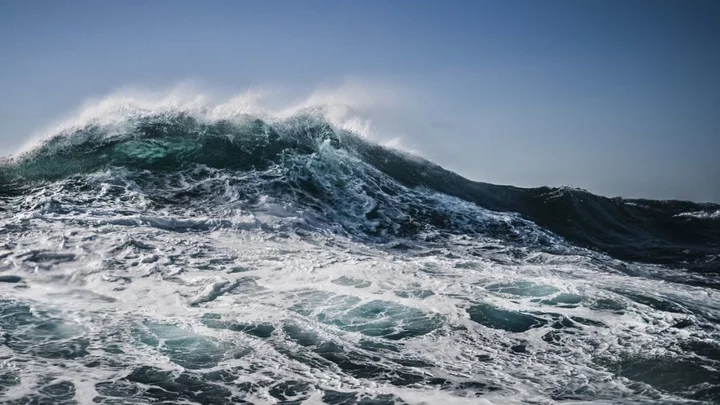
Scientists discover giant missing blob of water in the middle of the Atlantic
To the uninitiated, there isn’t much to water. Sure, the world’s oceans are filled with monsters, marvels and mysteries but, otherwise, they’re just vast, singular expanses of liquid. Right? Wrong. Far from being uniform everywhere, ocean water is a patchwork of interlinked layers and masses which mix and split apart thanks to currents, eddies, and changes in temperature or salinity. Indeed, beneath the surfaces of our great seas, there are waterfalls, rivers and even gigantic blobs, stretching thousands of miles, that somehow manage to evade detection. Now, scientists have discovered one of these massive blobs in the middle of the Atlantic Ocean; extending from the tip of Brazil to the Gulf of Guinea. Until the discovery of this water mass – which has been named the Atlantic Equatorial Water – experts had seen waters mixing along the equator in the Pacific and Indian oceans, but never in the Atlantic. "It seemed controversial that the equatorial water mass is present in the Pacific and Indian oceans but missing in the Atlantic Ocean because the equatorial circulation and mixing in all three oceans have common features," Viktor Zhurbas, a physicist and oceanologist at The Shirshov Institute of Oceanology in Moscow, told Live Science. "The identified new water mass has allowed us to complete (or at least more accurately describe) the phenomenological pattern of basic water masses of the World Ocean." As the name suggests, the Atlantic Equatorial Water is formed by the mixing of separate bodies of water by currents along the equator. To distinguish such masses from the water surrounding them, oceanographers analyse the relationship between temperature and salinity across the ocean — which determines the density of the seawater. Back in 1942, this charting of temperature-salinity led to the discovery of equatorial waters in the Pacific and Indian oceans, as Live Science notes. Because they are created by the mixing of waters to the north and south, the Indian and Pacific Equatorial waters share similar temperatures and salinities curving along lines of constant density, which make them easy to distinguish from the surrounding water. And yet, for years, no such relationship could be spotted in the Atlantic. However, thanks to data collected by the Argo programme – an international collection of robotic, self-submerging floats which have been installed across Earth’s oceans – the researchers spotted an unnoticed temperature-salinity curve located parallel to the North Atlantic and South Atlantic Central waters. This was that elusive Atlantic Equatorial Water. "It was easy to confuse the Atlantic Equatorial Water with the South Atlantic Central Water, and in order to distinguish them it was necessary to have a fairly dense network of vertical temperature and salinity profiles covering the entire Atlantic Ocean," Zhurbas explained in his email to Live Science. The discovery is significant because it offers experts a better understanding of how oceans mix, which is vital to how they transport heat, oxygen and nutrients around the world. Sign up for our free Indy100 weekly newsletter Have your say in our news democracy. Click the upvote icon at the top of the page to help raise this article through the indy100 rankings
2023-11-22 17:55

Earth has just received a message from 10 million miles away
An experiment to see if a laser could beam a message through space to Earth has been successful and could alter the future of spacecraft communication. The experiment was made possible by the Deep Space Optical Communications (DSOC) tool which was travelling onboard NASA’s Psyche spacecraft. It was successfully able to beam a message to Earth, via a near-infrared laser, from far beyond the Moon. It is the furthest such optical communication to have ever been communicated and was encoded with test data to ensure that it worked correctly. The DSOC successfully beamed the data from approximately 16 million kilometers (10 million miles) away to the Hale Telescope at Caltech’s Palomar Observatory in California. Hitching a ride on the Psyche spacecraft, the experiment achieved the so-called “first light” on 14 November, according to NASA's Jet Propulsion Laboratory which is managing the mission from Earth. NASA explained the demo’s “flight laser transceiver – a cutting-edge instrument aboard Psyche capable of sending and receiving near-infrared signals – locked onto a powerful uplink laser beacon transmitted from the Optical Communications Telescope Laboratory at JPL’s Table Mountain Facility near Wrightwood, California.” The uplink beacon assisted the transceiver in aiming its downlink to Caltech’s observatory, where the signal was received. Trudy Kortes, director of Technology Demonstrations at NASA HQ, said: “Achieving first light is one of many critical DSOC milestones in the coming months, paving the way toward higher-data-rate communications capable of sending scientific information, high-definition imagery, and streaming video in support of humanity’s next giant leap: sending humans to Mars.” It’s not the first time that optical communications have been used to beam messages from space, but these laser beams mark the furthest a message has ever been transmitted. With missions further than the moon, NASA typically uses radio waves to communicate. However, laser beams allow for a greater amount of data to be packed in them, potentially giving experts more options in future missions. Dr Jason Mitchell, director of the Advanced Communications and Navigation Technologies Division within NASA’s Space Communications and Navigation program, explained: “Optical communication is a boon for scientists and researchers who always want more from their space missions, and will enable human exploration of deep space.” How to join the indy100's free WhatsApp channel Sign up to our free indy100 weekly newsletter Have your say in our news democracy. Click the upvote icon at the top of the page to help raise this article through the indy100 rankings.
2023-11-21 23:26
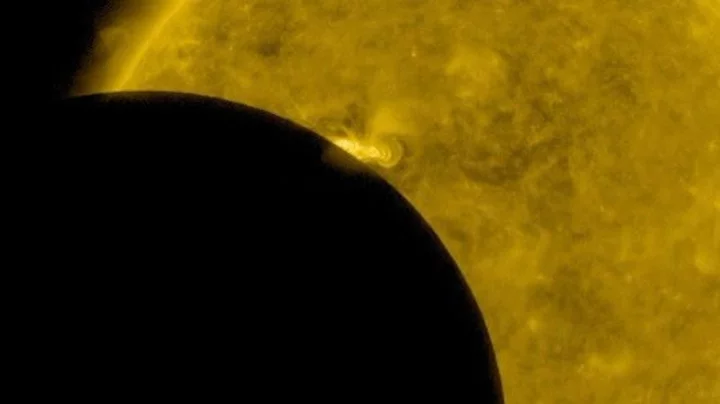
Chinese rocket that hurtled into the Moon was carrying a ‘secret object’
A mysterious object crashed into the Moon last year, and scientists think they’ve finally figured out what it was. On March 4, 2022, a piece of space junk hurtled towards the surface of our celestial companion, leaving behind not one but two craters – prompting speculation as to what exactly the manmade object was. And now, in a paper published in the Planetary Science Journal, a team of researchers at the University of Arizona (UArizona) have offered “definitive proof” that it was a booster from a Chinese space rocket that had spent several years hurtling through space. But the most interesting part of all this? The defunct piece of spacecraft was apparently carrying a secret cargo. Initially, based on its path through the sky, the UArizona team thought it was an errant SpaceX Falcon 9 rocket booster from a 2015 launch. However, after analysing how precise light signals bounced off its surface, they later concluded that it was more likely to be a booster from a Chang'e 5-T1 – a rocket launched back in 2014 as part of China’s lunar exploration programme. And yet, the Chinese space agency denied ownership, insisting that their rocket booster burned up in the Earth's atmosphere upon re-entry. But the US Space Command refuted this claim by revealing that the rocket’s third stage never re-entered the planet’s atmosphere. Furthermore, two key pieces of evidence gathered by the UArizona researchers suggested that there was more to the object than just a simple abandoned rocket booster. Firstly, the way it reflected light. The paper’s lead author, Tanner Campbell, explained in a statement: "Something that's been in space as long as this is subjected to forces from the Earth's and the moon's gravity and the light from the sun, so you would expect it to wobble a little bit, particularly when you consider that the rocket body is a big empty shell with a heavy engine on one side. “But this was just tumbling end-over-end, in a very stable way." In other words, the rocket booster must have had some kind of counterweight to its two engines, each of which would have weighed around 545kg (1,200lbs) without fuel. The stability with which the object rotated led Campbell and his colleagues to deduce that “there must have been something more mounted to [its] front”. Secondly, the team were struck by the impact the booster left when it slammed into the Moon. It created two craters, around 100ft (30.5 metres) apart, instead of one, which, according to Campbell was very unusual. He pointed out that the craters left behind by Apollo rockets are either round, if the object came straight down, or oblong if it crashed down at a shallow angle. "This is the first time we see a double crater," he said. "We know that in the case of Chang'e 5 T1, its impact was almost straight down, and to get those two craters of about the same size, you need two roughly equal masses that are apart from each other." And yet, despite the rigour of their investigation, the UArizona team have been unable to identify what exactly this additional object was. "We have no idea what it might have been – perhaps some extra support structure, or additional instrumentation, or something else," Campbell admitted. "We probably won't ever know." Sign up for our free Indy100 weekly newsletter Have your say in our news democracy. Click the upvote icon at the top of the page to help raise this article through the indy100 rankings
2023-11-21 20:25
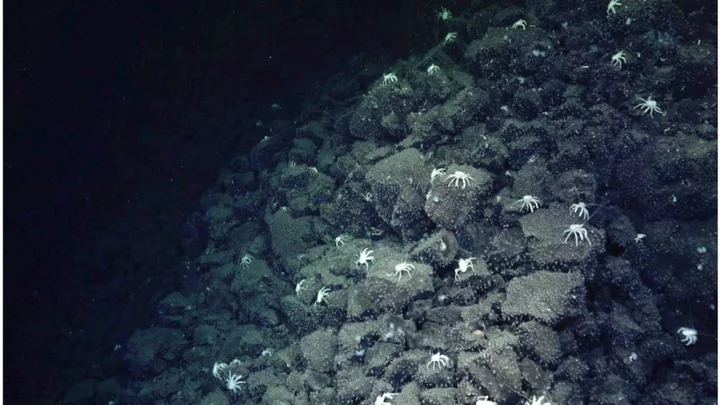
Trail of ghostly crabs leads scientists to extraordinary underwater discovery
We’ve heard of following the yellow brick road, and even following the white rabbit, but scientists have just made a landmark discovery by following a trail of ghostly crabs. For some 20 years, experts believed there was a hydrothermal vent field off the western Galápagos Islands, but they hadn’t been able to pinpoint its exact location. However, while exploring the area they spotted a galatheid crab (also called a squat lobster), and then another, and then another. They traced the crustaceans excitedly as their number grew until, finally, they were led to the elusive hydrothermal goldmine. There are only around 550 known hydrothermal vents in the world, only half of which have actually been seen. The rest have been identified via chemical and temperature signatures in the surrounding water, as Live Science notes. Hydrothermal vents are formed when water seeps into the rock of the seafloor at either a plate margin or where magma is rising to the surface in another part of the plate. The magma heats the water, which causes it to rise, before it’s expelled through fissures in the rock, often forming what are known as chimneys. The new Galápagos field, discovered thanks to the crabs which aggregate around deep-sear vents, extends more than 98,800 square feet (9,178 square metres), and consists of five geyser-like chimneys and three hot springs. The highest temperature so far recorded there is a staggering 288C (550F). As well as the the geysers, hot springs and crabs, the team, from the Schmidt Ocean Institute, found a thriving ecosystem of incredibly adapted organisms. "There were giant tube worms, which can be a couple (of) metres long. There were very large clams, sometimes called dinner plate clams, as well as mussels," said Roxanne Beinart, a biological oceanographer who co-led the expedition. To locate the hydrothermal field, the researchers first began searching the general region where a chemical anomaly had been identified in 2008. "One of the anomalies that we look for is a lens of low oxygen water," expedition co-leader Jill McDermott, a chemical oceanographer at Lehigh University in Pennsylvania, told Live Science. "Oxygen is completely removed through circulation in the seafloor. So the water that's expressed at the seafloor is devoid of oxygen." The team then followed this plume of oxygen-poor water until it disappeared — implying they were close to the vent. They then launched a remotely operated vehicle to inspect the seafloor and traced the breadcrumb trail of crabs to the vent field itself. “With 75 per cent of the seafloor still to map, finding this new vent field shows how much we still have to learn about our planet and those who live on it,” the Schmidt Ocean Institute’s Executive Director Dr Jyotika Virmani said in a statement. “I am continually amazed by the otherworldly beauty of our seafloor and look forward to uncovering more.” And what did the team christen the new hydrothermal vent field? Why, the “Sendero del Cangrejo,” or “Trail of the Crabs,” of course. Sign up for our free Indy100 weekly newsletter Have your say in our news democracy. Click the upvote icon at the top of the page to help raise this article through the indy100 rankings
2023-11-21 18:52

Doctor shares 6 signs that you might be a borderline alcoholic
Are you questioning your relationship with alcohol? Or perhaps you're concerned about someone in your life? Dr. Dave Nichols - an NHS GP - shared six signs that you may be a "borderline alcoholic" to help you know if it's time to stop. Dr. Nichols spoke to The Sun about what makes someone "dangerously close to the line" of drinking too much. "A lot of people know that they sometimes drink too much, but many don't know where the line is when it comes to problematic alcohol consumption," Dr. Nichols explained. "It describes a pattern of harmful drinking where you may have a drink, or several drinks, every day or regularly binge drink." To help people gain a better understanding of their drinking habits, he shared six signs to look out for: drinking alcohol every day without realising it; binge drinking often; only socialising if alcohol is involved; drinking frequently during the day; finding it irritating when others are not drinking; and consuming more than the recommended government guidelines. The NHS recommends drinking no more than 14 units spread across three days or more. Which equates to roughly six medium (175ml) glasses of wine, or six pints of 4 per cent beer. Dr Nichols warns that borderline alcoholics are at risk of falling into dependence: "While you may not yet have developed a physical dependence to this pattern of drinking, you are at high risk of developing alcohol dependence. "Borderline alcoholics might experience symptoms such as abdominal pain, stress, anxiety, bad skin, trouble sleeping, irritability and higher blood pressure." If you're looking to cut back on your alcohol consumption, events such as Dry January are a great way to kickstart habits. Dr Nichols also suggested socialising in sober settings, such as exercise classes, dog walks, or coffee shops. If you are worried about your alcohol consumption find a list of NHS resources here. Sign up to our free Indy100 weekly newsletter Have your say in our news democracy. Click the upvote icon at the top of the page to help raise this article through the indy100 rankings. How to join the indy100's free WhatsApp channel
2023-11-21 00:20

Scientists say you don't need to be religious to have a 'moral compass'
Scientists have decided it’s official – people do not necessarily have to believe in a “god” to have a moral compass. A group of four University of Illinois surveys found that while there were subtle differences in behaviour between groups of atheists and religious people – or “theists” – they live by the same moral codes. Tomas Ståhl of the University of Illinois said: “The most general take-home message from these studies is that people who do not believe in God do have a moral compass. "In fact, they share many of the same moral concerns that religious believers have, such as concerns about fairness, and about protecting vulnerable individuals from harm.” The first two surveys crowdsourced responses from hundreds of American residents, and found that religion was unrelated to amoral tendencies, whether people would endorse liberty or oppression or whether people cared about being fair to others. The second two surveys compared thousands of people across the US and Sweden, which is a much more secular country. The data came up with the same results. Mainstream religions are on a downward trend worldwide. In the UK, for example, just 46 percent of people identified as Christian in the 2021 census, compared to 59 percent in 2011. The US has seen similar declines. Ståhl added: “However, disbelievers are less inclined than believers to endorse moral values that serve group cohesion, such as having respect for authorities, ingroup loyalty, and sanctity… “It is possible that the negative stereotype of atheists as immoral may stem in part from the fact that they are less inclined than religious people to view respect for authority, ingroup loyalty, and sanctity as relevant for morality, and they are more likely to make moral judgments about harm on a consequentialist, case by case basis.” It’s news that will come as little surprise to the estimated 750 million atheists across the globe, of course. But for people who still think religion is the key to morality, it could be food for thought. How to join the indy100's free WhatsApp channel Sign up to our free indy100 weekly newsletter Have your say in our news democracy. Click the upvote icon at the top of the page to help raise this article through the indy100 rankings.
2023-11-20 23:16

Scientists discover fluffy 'alien' planet where it rains sand
Experts have discovered a fluffy “alien” planet where it rains sand in stunning new observations from the James Webb Space Telescope. The bizarre-looking planet is officially known as exoplanet WASP-107b and has a cloud of silicate sand that exists high within its atmosphere giving it its strange fluffy appearance. NASA’s James Webb Space Telescope (JWST) has been responsible for some astounding findings since it was launched in 2021, including a mysterious galaxy shaped like a question mark. Now, observations made by the telescope have been used by experts who have been able to determine the atmospheric composition of the exoplanet that was pictured. A team of European astronomers found that water vapour, sulfur dioxide and silicate sand clouds existed in the exoplanet’s diverse atmosphere. The exoplanet WASP-107b is one of the lowest-density planets that astronomers are aware of. To put it into context, it is the same size as Jupiter, but has just 12 per cent of Jupiter’s mass. Thanks to its low density, it has allowed scientists to take a deeper look into the planet’s atmosphere, exploring 50 times deeper than would be possible with denser planets. The discovery of sulfur dioxide was a surprise because the host star it orbits only emits a small amount of high-energy light photons. But, its low-density atmosphere allows the photons to penetrate WASP-107b’s atmosphere where the chemical reaction that creates sulfur dioxide can occur. They also discovered that it essentially rains sand on the exoplanet due to the presence of clouds high in the atmosphere made up of fine silicate particles. Experts believe the clouds of sand form in the same way as rain does on Earth as the droplets continually fall and condense back into cloud form. The lead author of the study, Leen Decin from Katholieke Universiteit Leuven in Belgium, explained: “JWST is revolutionizing exoplanet characterisation, providing unprecedented insights at remarkable speed.” She added: “The discovery of clouds of sand, water, and sulfur dioxide on this fluffy exoplanet… is a pivotal milestone. It reshapes our understanding of planetary formation and evolution, shedding new light on our own solar system.” How to join the indy100's free WhatsApp channel Sign up to our free indy100 weekly newsletter Have your say in our news democracy. Click the upvote icon at the top of the page to help raise this article through the indy100 rankings.
2023-11-20 18:17
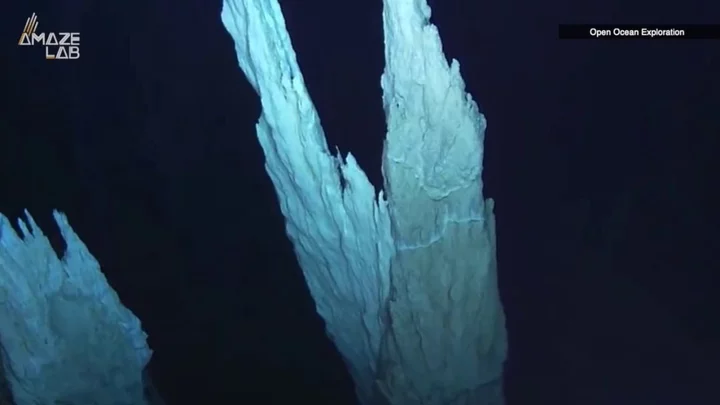
'Lost City' deep in the Atlantic is like nothing else we've ever seen on Earth
The reality of what lies within our oceans has fascinated people since time immemorial, so it’s no wonder we’ve created countless myths about the watery depths. But step aside, Atlantis, scientists have discovered a real Lost City beneath the waves, and this one is teaming with life. The rocky, towering landscape is located west of the Mid-Atlantic Ridge mountain range, hundreds of metres below the surface of the Atlantic Ocean, and consists of massive walls, columns and monoliths stretching more than 60 metres (200ft) tall. To be clear, it’s not the home of some long-forgotten human civilisation, but that doesn’t make its existence any less significant. The hydrothermal field, dubbed the “Lost City” upon its discovery in the year 2000, is the longest-lived venting environment known in the ocean, Science Alert reports. Nothing else like it has ever been found on Earth, and experts think it could offer an insight into ecosystems that could exist elsewhere in the universe. For more than 120,000 years, snails, crustaceans and microbial communities have fed off the field’s vents, which spout out hydrogen, methane and other dissolved gases into the surrounding water. Despite the absence of oxygen down there, larger animals also survive in this extreme environment, including crabs, shrimps and eels. Although, they are, admittedly, rare. The hydrocarbons produced by its vents were not created by sunlight or carbon dioxide, but by chemical reactions way down on the seafloor. This is how life on our planet may have originated some 3.7 billion years, and how it could be formed on others. "This is an example of a type of ecosystem that could be active on Enceladus or Europa right this second," microbiologist William Brazelton told The Smithsonian back in 2018, referring to the moons of Saturn and Jupiter respectively. "And maybe Mars in the past." The tallest of the Lost City’s monoliths has been named Poseidon, after the Greek god of the sea, and it measures more than 60 metres high. Meanwhile, just northeast of the tower, is a cliffside where the vents “weep” with fluid, producing "clusters of delicate, multi-pronged carbonate growths that extend outward like the fingers of upturned hands", according to researchers at the University of Washington. There are now calls for the Lost City to be listed as a World Heritage site to protect the natural phenomenon, particularly given humans’ propensity to destroy precious ecosystems. Back in 2018, it was confirmed that Poland had won the rights to mine the deep sea around the thermal field. And whilst, in theory, the Lost City would not be touched by such works, as Science Alert notes, the destruction of its surroundings could have unintended consequences. Sign up for our free Indy100 weekly newsletter Have your say in our news democracy. Click the upvote icon at the top of the page to help raise this article through the indy100 rankings
2023-11-20 17:45

Dinosaurs still exist on other planets, say scientists
The dinosaurs may have been extinct for more than 65 million years but scientists have suggested that they could still exist as aliens on other planets. Researched published in the Monthly Notices of the Royal Astronomical Society suggests that dinosaurs might not only be on other planets but that we could also find them. The study suggests that if scientists researched compounds that are not currently on Earth but ones that were around during the age of the dinosaurs then it may yield some results. One key element that scientists believe could unlock what would be a groundbreaking discovery is oxygen. The levels of oxygen on Earth at the moment are around 21 per cent but during the time of dinosaurs it was higher at 30 per cent. This, in theory, allowed the dinosaurs to flourish and rule the planet for millions of years. The study suggests that if similar levels of oxygen can be discovered on faraway planets then the conditions could be right for alien like dinosaurs to exist. The study's co-author Lisa Kaltenegger said in a statement: "Modern Earth's light fingerprint has been our template for identifying potentially habitable planets, but there was a time when this fingerprint was even more pronounced — better at showing signs of life." She adds: "This gives us hope that it might be just a little bit easier to find signs of life — even large, complex life — elsewhere in the cosmos." One clue that could unlock this discovery which scientists are looking for are signs of a Phanerozoic stage on a planet which would allow creatures like dinosaurs to evolve. The study's lead author, Rebecca Payne of Cornell University, said: "The Phanerozoic is just the most recent 12 per cent or so of Earth's history, but it encompasses nearly all of the time in which life was more complex than microbes and sponges. These light fingerprints are what you'd search for elsewhere if you were looking for something more advanced than a single-celled organism." If they are successful in finding these conditions on other planets then Kaltenegger believes it could lead to the discovery of dinosaurs that have never been found on Earth. "Hopefully we'll find some planets that happen to have more oxygen than Earth right now because that will make the search for life just a little bit easier," she said. "And, who knows, maybe there are other dinosaurs waiting to be found." Sign up for our free Indy100 weekly newsletter Have your say in our news democracy. Click the upvote icon at the top of the page to help raise this article through the indy100 rankings.
2023-11-20 00:17
